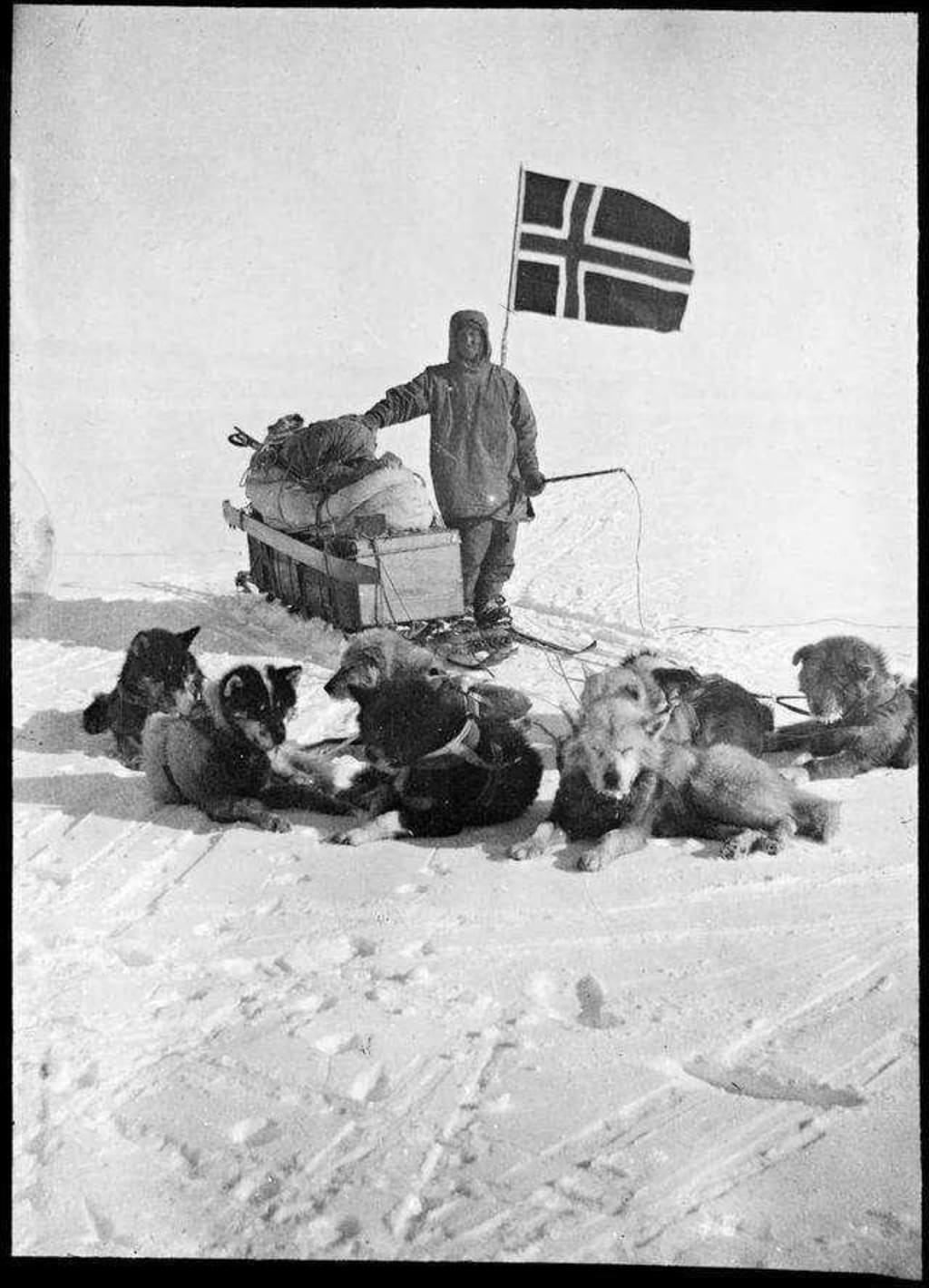
Luar Amundsen is a great polar explorer. He opened up the waterway from the Atlantic Ocean to the Pacific Ocean through the northern waters of North America. He was the only global navigator to sail along the entire coastline of the Arctic Ocean, the first person to reach the South Pole, and the first person to take off from Spitsbergen in Europe by airship. The founder of the archipelago, who crossed the North Pole to Alaska in North America, his life is full of legends.
Amundsen was born in Norway in 1872. He read a lot of books on sailing expeditions in middle school and accumulated a wealth of emotional knowledge about ocean navigation.
As a teenager, Amundsen set a lofty ambition to learn from his predecessors and become a polar explorer.
In 1893, in order to gain practical sailing experience, Amundsen resolutely ran out of college and became a sailor on a seal fishing ship. With amazing perseverance, he quickly adapted to the environment, mastered all the essentials of a sailor's work, and soon became a first mate on another hunting ship, and his sailing skills improved rapidly.
In the autumn of 1896, Amundsen finally passed the examination to qualify as a navigator. And became the pilot of the expedition ship "Bilikika". The ship went to Antarctica for two years. Due to the ice floes, the expedition mission could not be completed, but Amundsen's excellent sailing skills and command ability were brought into full play. On his return, he was appointed as acting captain and head of the expedition.
After returning from the Antarctic expedition, Amundsen began to prepare to find the northwestern route of the Arctic Ocean and conduct scientific expeditions for geomagnetic investigations. He made a special trip to Germany to study the methods of geomagnetic observation and analysis for half a year. After returning to China, he borrowed money to buy a small The old ship, named "Joa", found 6 like-minded sailors, and started his expedition to find the Northwest Passage in the Arctic Ocean on June 16, 1903.
On September 9 of that year, the Yoa sailed to the southeast of William Island. At this time, the long and cold polar night in the Arctic Ocean had begun, and Amundsen found a calm bay and broke down for the winter.
Located on William Island in the Arctic Circle, from late October to late February this year, the winter night lasts for more than 100 days. The difficulty of overwintering here is conceivable. The severe cold and darkness discourage the weak-willed.
Amundsen and his party managed to survive the long winter, but God was not beautiful. In the second summer, the temperature was low, the sea ice did not melt, and the research ship could not move, so they had to spend another winter here, until August 1905. In January, the sea was opened, and the white sea of ice gradually showed a blue face. The "Joa" continued to sail westward, throwing aside the Arctic Islands in northern Canada. However, the good times did not last long. As the temperature dropped and the ice floes on the sea continued to increase, Amundsen and his party had no choice but to spend their third winter on the northwest coast of Canada.
When the summer of 1906 came, he successfully crossed the Bering Strait and finally sailed from the Arctic Ocean to the Pacific Ocean. Creating a waterway from the Atlantic Ocean to the Pacific Ocean via the northern coast of North America was the dream of countless explorers, who fought for it for more than 400 years, and was finally completed by Amundsen.
After Amundsen returned to Norway, he began to prepare for a new expedition - marching to the North Pole, intending to set off in the autumn of 1909. On April 6 of this year, US Admiral Robert Peary had already taken the lead. The first to reach the North Pole. After Amundsen got the news, he had to abandon his original plan and decided to advance to the South Pole.
On January 14, 1911, Amundsen came to Antarctic Whale Bay on the whaling ship "Fram" and established an expedition base on the shore. Based on his own experience and the data collected by past explorers, he carefully studied The situation in this area determined the route to the South Pole, calculated the various sections of the whole journey, and set up a series of grain stations, fuel supply stations and easy on the snowfield at each latitude from 80 ° to 85 ° south latitude. Identified road signs.
When everything was ready, Amundsen selected four companions, rode 42 huskies pulled by huskies, and began the sprint to the South Pole along the 162 ° W longitude on October 20, 1911. By November 1, Amundsen's rival British polar explorer Scott also pushed towards the pole along another route, and a battle for the first to reach the South Pole began.
When Amundsen traveled 550 kilometers from the South Pole, he decided to leave only 18 dogs and kill the others. Use the dog meat to feed the rest of the dogs, store some of the meat, and travel light.
December 14, 1911. They finally reached the Pole of the South Pole, set up their tents, raised the Norwegian flag, and took a group photo with the expedition members. After staying for three days and three nights, they returned north, and on January 25, 1912, returned to the whaling ship's berth unharmed. The round-trip trip totaled 2,800 kilometers. The entire expedition was completed according to the deadline arranged by Amundsen in advance. After more than 100 days, they returned to Europe. British Scott arrived at the South Pole on January 18, 1912, more than a month later than Amundsen.
After Amundsen returned from the South Pole, he did not revel in the victory of picking the crown jewel. He proposed to use air vehicles to investigate the North Pole very early, and made many attempts.
In May 1926, Amundsen, the American Elthworth and the Italian Nopelle took off from the Spitsbergen Islands on the airship "Norway" and reached Alaska in the United States through the North Pole. The whole journey was 4,000 kilometers. This is the first flight of human beings across the North Pole. In the past, it was said that there was a vast land between the North Pole and Alaska. This flight confirmed that the above legend was wrong.
On May 23, 1928, Nobele piloted the airship "Italy" to the North Pole for investigation. When he returned, the airship crashed. 9 people fell on the ice and 6 people were missing. After Amundsen learned the news, he took a plane to the rescue on June 18. On June 20, people received the last telegram from the plane, which has remained silent since then.
Amundsen, the great explorer and five crew members, are forever buried in the cold Crystal Palace of the Arctic Ocean.
Luar Amundsen's life is full of legends. His books "Antarctica", "Polar Flight", and "My Life as an Explorer" are also a valuable spiritual wealth for people. His courage to challenge nature, not afraid of difficulties, and indomitable spirit will always inspire future generations to explore the unknown world.
About the Creator
Emily
Enjoy solitude and like to write quietly alone.






Comments
There are no comments for this story
Be the first to respond and start the conversation.